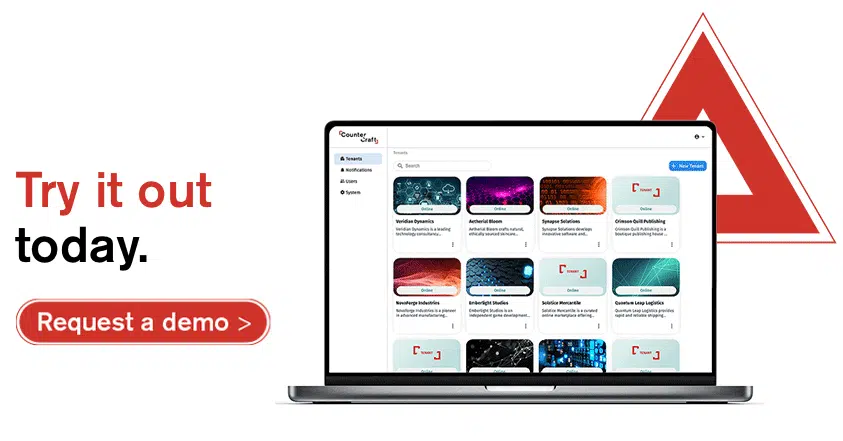Insider threats are dangerous because they exploit trust, access, and familiarity with systems—often going undetected for months. Real-time monitoring and deception tech provide the visibility and proof needed to detect them.
Insider threats represent one of the most complex challenges in cybersecurity today, not because of volume, but because of subtlety. Unlike external attacks, insider threats exploit trust, access, and system familiarity, making them harder to detect and even harder to prove.
In highly regulated industries like healthcare, where sensitive data, patient records, and critical systems intersect, the stakes are even higher. And as hybrid work, contractor access, and cloud adoption increase, so does the attack surface for malicious or negligent insiders.
What’s needed is not just visibility but contextual, real-time detection. This is where internal network security monitoring and deception technology combine to expose insider behavior that traditional tools often miss.
What Makes Insider Threats So Difficult to Detect?
When people hear insider threat, they often picture a rogue employee stealing data for personal gain. But in reality, insider threats fall into multiple categories:
- Malicious insiders: Employees or contractors who intentionally steal data, damage systems, or bypass controls.
- Negligent insiders: Well-meaning staff who misconfigure access, reuse passwords, or accidentally leak data.
- Compromised insiders: Users whose credentials are hijacked by external attackers and used to move laterally within the network.
“Insider threats account for 60% of data breaches — whether through negligence, credential theft, or malicious intent.”
Ponemon Institute, 2023 Cost of Insider Threats Report
What makes these threats so dangerous is that they originate from legitimate accounts and often mimic normal workflows. Unless organizations have deep visibility and behavior-based detection in place, these threats can persist undetected for months.
How Does Internal Network Security Monitoring Help Detect Insider Threats?
Internal network security monitoring encompasses various tools and techniques designed to analyze east-west traffic, user behavior, and system interactions within an organization’s internal network. Unlike perimeter-focused solutions such as firewalls or secure gateways, internal monitoring specifically addresses risks such as privileged access misuse, unauthorized lateral movement within networks, unusual patterns in data access, and anomalies in system interactions. For instance, an unusual event might be identified if a healthcare professional, such as a nurse, suddenly accesses thousands of patient records spanning multiple regions during unusual hours, even if using legitimate credentials.
How Does Deception Technology Improve Insider Threat Detection?
Even the most advanced monitoring tools can struggle to distinguish between legitimate and malicious activity, especially when the insider is knowledgeable enough to avoid obvious red flags.
Deception technology is one of the only tools effective in identifying insider threats. It adds a powerful layer of active defense by deploying decoys, traps, and synthetic assets throughout the network. These are invisible to legitimate users, but irresistible to attackers, or anyone behaving suspiciously.
Here’s how it works:
- Decoy credentials are embedded in file systems or applications. If someone attempts to use them, it’s an immediate red flag.
- Fake file shares and database instances mimic real systems, luring insiders seeking sensitive information.
- Deceptive Active Directory objects simulate high-value targets, exposing unauthorized privilege escalation attempts.
Because these assets serve no legitimate function, any interaction with them is automatically malicious. This eliminates ambiguity and allows security teams to respond with confidence and speed.
Healthcare Cybersecurity: A High-Risk Use Case
Nowhere is insider threat detection more critical than in healthcare. With patient privacy, life-critical systems, and data compliance (e.g., HIPAA) in play, one insider incident can lead to massive reputational and regulatory fallout.
Common insider threat scenarios in healthcare include:
- Data snooping: Employees accessing medical records without legitimate purpose.
- Credential misuse: Contractors using expired or shared login credentials.
- System manipulation: Insiders changing configurations in electronic health record (EHR) systems.
Internal monitoring tools can alert teams to access anomalies, but deception offers a way to actively identify and mislead bad actors, all while preserving uptime and maintaining compliance.
Read more about five indicators of insider threat risk here>
Privilege Escalation: A Common Insider Tactic
One of the most common tactics used by insider threats, especially compromised accounts, is privilege escalation. Attackers move from low-level user accounts to admin-level access to gain control of systems, exfiltrate data, or deploy malware.
Deception technology can:
- Plant fake admin credentials or password vaults that flag any attempt to escalate.
- Deploy decoy Active Directory objects that simulate elevated privileges.
- Alert security teams instantly when insiders attempt to enumerate accounts or group memberships, common steps before an escalation attempt.
This level of precision helps protect Active Directory, the backbone of identity across most enterprises, from both external attackers and rogue insiders.
Real-World Scenario: Exposing an Insider with Deception
Consider a financial controller in a healthcare organization who, after receiving a termination notice, begins collecting sensitive data. They access patient billing systems, attempt to connect to HR databases, and open PowerShell terminals, actions that don’t align with their historical behavior.
Internal monitoring may raise a few alerts, but the controller never technically violates policy. However, when they stumble upon a decoy financial report repository and attempt to extract files, the deception platform flags the interaction instantly.
The security team receives full telemetry: access time, tools used, lateral movement, even potential intent. The controller is isolated, HR is alerted, and the organization avoids a potential breach with minimal disruption.
How Can Organizations Build Strong Insider Threat Detection Programs?
Detecting insider threats isn’t just a technical function, it’s a strategic imperative.
Here’s how forward-thinking organizations are building strong programs:
1. Integrate Monitoring Across Identity and Access Systems
From Active Directory to cloud IAM platforms, visibility must extend across all user identities and access points.
2. Combine Behavioral Analytics with Deception
Use insider threat platforms to monitor and baseline behavior, while deploying decoys to expose intent and tactics.
3. Enforce Least Privilege and Monitor Escalation Attempts
Limiting access reduces risk. Monitoring attempts to escalate privileges or scan directory structures helps catch insiders before damage is done.
4. Customize Monitoring for High-Risk Industries
In sectors like healthcare, establish rules for access based on role, time, volume, and geography. Insider threats rarely follow these rules and that’s your opportunity to detect them.
Implementing proactive measures, such as deploying deception technology, can significantly enhance an organization’s ability to detect and mitigate insider threats.
Why Is Deception a Game-Changer for Insider Threats?
Deception provides high-fidelity, low-noise alerting that security teams can act on with confidence. Unlike traditional tools that produce massive alert volumes with little context, deception isolates true threats by focusing on intent, not just activity.
It also produces actionable threat intelligence:
- What systems the insider tried to access
- Which credentials they attempted to use
- How they moved laterally across the network
This intelligence feeds back into broader detection systems, helping improve security posture across the entire organization.
Visibility Without Trust Is Just Guesswork
Insiders don’t just walk through the front door, they have keys, swipe cards, and passwords. That’s what makes them dangerous.
Modern insider threat detection must go beyond logs and alerts. It must reveal intent, provide context, and generate actionable intelligence, all while maintaining privacy, trust, and compliance.
Deception provides that missing layer, one that turns passive monitoring into proactive threat detection.
How CounterCraft Helps
Insider threats require more than monitoring, they require proof of intent. CounterCraft delivers this through precision deception environments that blend seamlessly into internal networks, catching privilege abuse, data exfiltration attempts, and lateral movement from within.
CounterCraft scales massively in minutes, helping organizations blanket internal systems with adaptive decoys, monitor interactions in real time, and gather enriched threat intelligence that feeds into existing SIEMs and XDR platforms.
This means faster detection, sharper response, and fewer false positives.C ounterCrafts specific, actionable, threat intelligence powered by deception, exposes insider threats before they escalate, with clarity, speed, and zero noise.
In Short: Key Takeaways on Insider Threat Detection
- Insider threats come in many forms—malicious, negligent, or compromised—and are often difficult to detect with traditional tools.
- Internal network security monitoring focuses on east-west traffic and behavioral baselines to flag unusual activity.
- Deception technology reveals true intent by luring insiders with synthetic credentials and decoys.
- In high-risk sectors like healthcare, detecting and proving insider activity is critical for compliance and trust.
- Combining behavioral analytics with deception provides actionable threat intelligence and cuts through alert noise.
- CounterCraft enables organizations to expose, track, and respond to insider threats with precision and speed.


